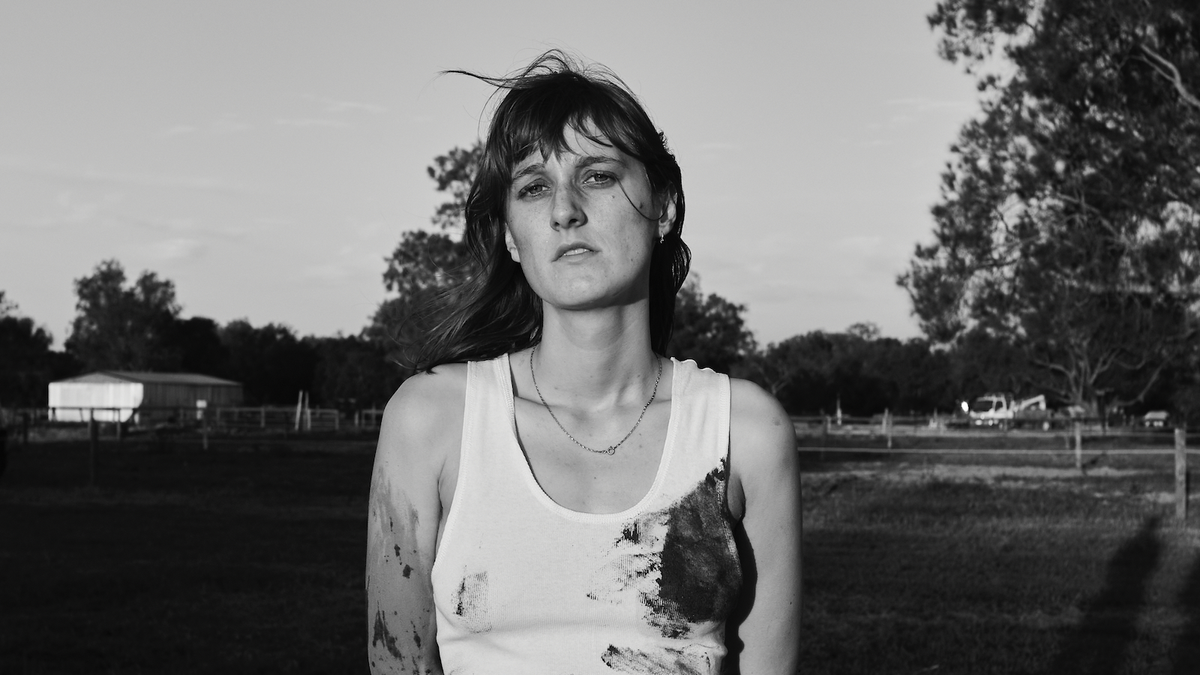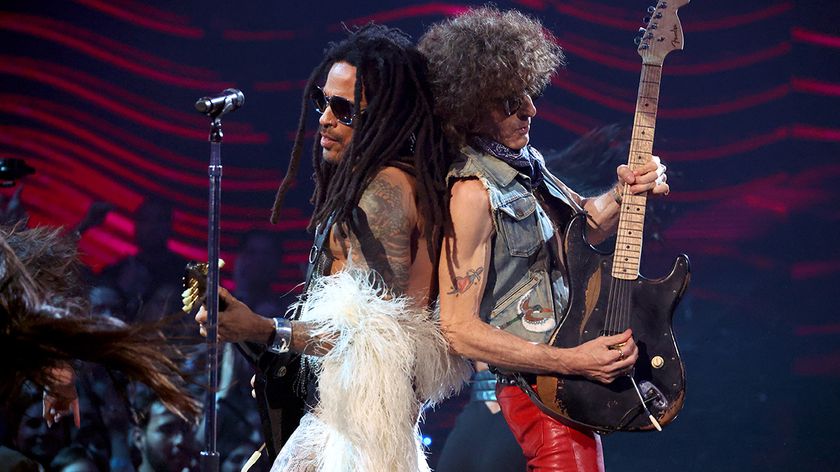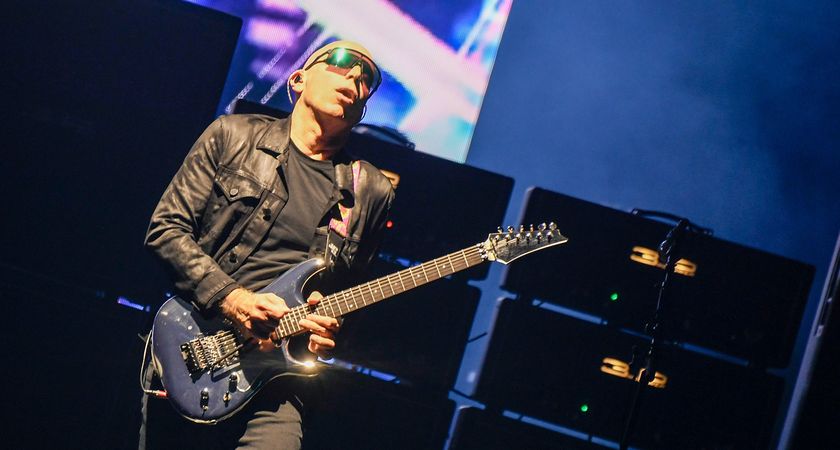Carla Geneve: “It’s really honest and transparent songwriting about what I was going through”
Carla Geneve walks us through the poignantly honest origins of her show-stopping debut album

Note: this article is also featured in Australian Guitar #142, which is out now wherever great magazines are sold! Click here to read more about what’s in this jam-packed issue!
Like most kids of the late ‘90s, Carla Geneve learned the hard way that coming of age isn’t always as simple or saccharine as John Hughes told us it’d be. By age 22, the Albany‑native indie‑rock stalwart had lived through her fair share of heartache, adolescent reckoning and undiagnosed mental illness; but where most of us would slump in our ways and embrace the mundanity of a 9-to-5 grind, Geneve was determined to blast past the barriers keeping her from happiness and dive headfirst into the kaleidoscopic world of rock ’n’ roll.
Cue Geneve’s riveting debut full-length, Learn To Like It. Equally intimate and intense, the ten‑track tour‑de‑force takes us on a cathartic, no‑holds‑barred rollercoaster ride through all the ups and downs Geneve endured to make it happen. She bounds between gritty punk, soulful blues and heart-wrenching balladry with a flow unrivalled by her peers, pouring her all into every last second of the record. It’s a beautifully bold, powerfully personal introduction to Geneve’s world as an undoubtable creative prodigy – and as she explains to Australian Guitar, not a note of it came by force.
How did you want this record to best introduce people into the musical world of Carla Geneve, or really personify who you are as a musician and creative in 2021?
It’s a bit of pressure having to be like, “This is me! This is what I’m doing!” But it’s kind of exciting. I wrote most of these songs when I was about 18, so I didn’t really have any grand plans for them – but I think it’s a really nice way to start making music the way I want to make it; it’s really honest and like transparent songwriting about what I was going through at the time. I want my music to be something that goes for my whole life, and it’ll be different depending on who I am in that point in my life. I’m different to who I was when I wrote this album, but I think it’s really important to capture those couple of years, how I felt and how I wanted to express myself.
Did you find that documenting your coming-of-age on this record helped you grow not just as musician, but as a person altogether?
100 percent, yeah! I’ve always written songs about my personal life; I write a lot for myself in journals, too, and I guess my songs are just an extension of my journals at this point. It definitely helped me – I think I had a bit of a hard time expressing myself for a while, so songwriting was kind of my way of guiding myself through some things, and talking to the people around me. It’s kind of funny, not being able to talk to people but then getting on a stage and telling everyone my closest secrets.
I love the way the guitars bounce between different styles depending on the energy of a track, like how “Brighter Than Blue” uses twang and bending melodies to portray emotional strain, and then “Dog Eared” is all big, ‘90s punk grunt. What’s your philosophy on using tone to tell a story?
Initially when I started playing guitar, it was just the songs that I was worrying about; I found a tone that worked for me, and then just stuck to it. I mostly just focussed on the playing and the songwriting to express myself. But yeah, everything fits with the story – “Dog Eared” is pretty straight-up just because that’s the way that song should be. “Brighter Than Blue” I wanted to sound a bit wonky and a bit imperfect – a bit like it was about to fall apart, y’know? There’s a lot of whammy bar on that song.
I was reading earlier about how the idea for “Dog Eared” stemmed from your career as a music teacher, and the enthusiasm of your class. Are you often inspired by the kids you teach?
Always! I don’t really want to say that it’s easy, as a professional musician, to get tired of music – but if you do it every day and you’re around people who are doing it every day, you start to take it for granted a little bit. So being around kids that are just discovering music is so exciting. So many times I’ve been like, “Now this is an overdrive pedal,” And they’re like, “Woah, what’s that!?” There’s nothing quite like the excitement you feel the first time you get to use a guitar pedal, or play as a band and make a really loud noise.
Get The Pick Newsletter
All the latest guitar news, interviews, lessons, reviews, deals and more, direct to your inbox!
The first time someone expresses something within themselves by doing that – I get to see that from an outside perspective every day, and I honestly feel so lucky to have that job because it makes me remember why I got into music in the first place. I can go to work in a bad mood, but I can’t leave work in a bad mood. It’s just the best!
Have you played the record for your students?
No [laughs]. I’m a bit too shy. But they’ll hear it. I think they liked “Dog Eared” when it came out, so I hope they know that they pretty much wrote that song for me. I hope they like the album!
What guitars are you playing on this record?
Oh God! It was such a long time ago, I can’t remember [laughs]. I think I mostly just used my Tele. It’s a custom Deluxe model, it’s Japanese, it’s got two humbuckers, and I just love it so much. I used that for the beds on every track, and then I used a more standard single-coil Tele for all the overdubs because it cut through the mix a bit more.
There was also an old ‘60s Harmony in the studio, which I used for a lot of the solos – it has a lot of those nice warm tones, and it had a whammy bar that I could make everything sound shit with [laughs]. I can’t remember much else of the gear we had – it’s less about the gear than it is the songs themselves. The guitars aren’t everything to me… But it is nice to play a nice guitar.
What do you love so much about your custom Japanese Tele?
Well when I first bought it, there was a box of viagra in the case; it had definitely seen some shit in its time. But it goes really well with my Vox – I use a Vox AC15, and for some reason they just pair super well and it always seems to work out. The neck is so bendy – it doesn’t have a whammy bar, but I get the full effect just from bending the neck… I’m probably going to snap it in half onstage one day [laughs]. It’s all beaten up and a bit shit, and it’s certainly lived a life. For a while only one pickup worked, but I didn’t really care because I only use the neck pickup anyway. And I love it! I don’t know what it is about it, but it just makes me feel good.

Ellie Robinson is an Australian writer, editor and dog enthusiast with a keen ear for pop-rock and a keen tongue for actual Pop Rocks. Her bylines include music rag staples like NME, BLUNT, Mixdown and, of course, Australian Guitar (where she also serves as Editor-at-Large), but also less expected fare like TV Soap and Snowboarding Australia. Her go-to guitar is a Fender Player Tele, which, controversially, she only picked up after she'd joined the team at Australian Guitar. Before then, Ellie was a keyboardist – thankfully, the AG crew helped her see the light…

“We had 15 minutes left, and it was time to go… I just started playing that riff. Then Lenny goes, ‘Whoa, what’s that?’” Lenny Kravitz guitarist Craig Ross reveals the serendipitous roots of a Kravitz classic

“The concept of the guitar duel at the end was just appalling”: Crossroads is an essential piece of '80s guitar lore, but not every guitar legend was a fan of the film








